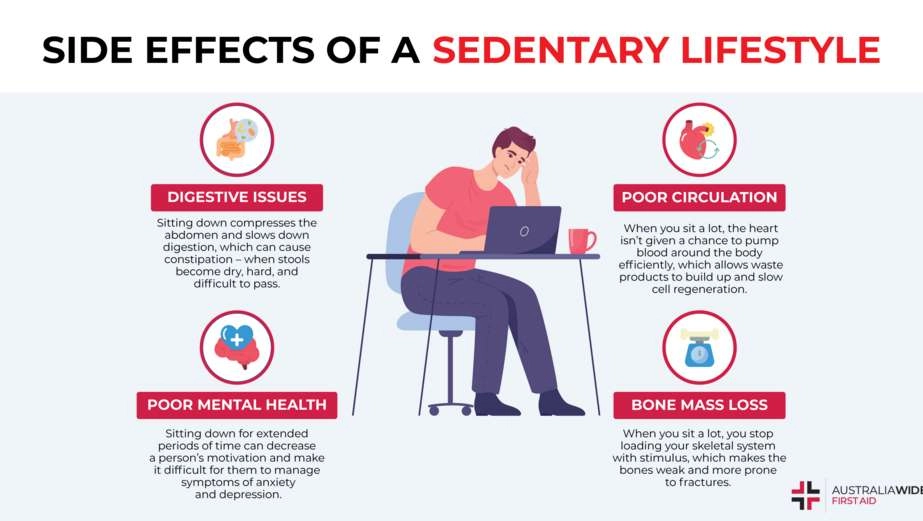In today’s fast-paced yet comfort-driven society, two seemingly harmless habits—excessive sugar consumption and a sedentary lifestyle—are quietly fueling a surge in chronic and degenerative diseases. While aging is inevitable, the quality of one’s later years can vary dramatically depending on lifestyle choices. Among the most concerning risk factors are hidden sugars and prolonged physical inactivity, both of which can speed up the decline of health, independence, and vitality.
Let’s dive deeper into this pressing issue that affects not only individuals but also healthcare systems around the world.
Understanding Sugar: More Than Just Empty Calories
Sugar is everywhere. From your morning latte to your “healthy” granola bar, it sneaks into meals, snacks, and drinks more than most people realize. But what exactly makes it harmful—especially as we age?
The Physiology of Sugar
When consumed, sugar rapidly raises blood glucose levels. In response, the pancreas releases insulin to shuttle that glucose into cells for energy. Over time, high sugar intake can overwork the pancreas, leading to insulin resistance, a precursor to type 2 diabetes.
But that’s just the beginning. Elevated blood glucose levels also:
- Increase inflammation
- Promote fat storage, particularly visceral fat
- Accelerate cellular aging through a process called glycation
As we get older, our bodies become less efficient at processing sugar, making excessive intake even more dangerous.
Sedentarism: The New Smoking?
While sugar attacks from within, a lack of movement is equally deadly. Sedentarism—or the practice of sitting or lying down for extended periods with little to no physical activity—is becoming the hallmark of modern living. And it’s more harmful than most think.

What Happens When We Stop Moving?
Muscles weaken. Blood flow slows. Bones become brittle. Even brain function declines. Research shows that sedentary behavior increases the risk of:
- Cardiovascular disease
- Type 2 diabetes
- Obesity
- Certain cancers
- Cognitive decline and dementia
Alarmingly, a sedentary lifestyle is now recognized as one of the leading preventable causes of death worldwide, right alongside smoking.
Sugar and Sedentarism: A Double-Edged Sword
When sugar and sedentarism coexist—as they often do—their negative effects are amplified. Here’s how:
- Weight Gain and Obesity: Excess sugar adds calories with little nutritional value. When the body isn’t burning those calories due to inactivity, fat accumulates—especially around organs, where it’s most dangerous.
- Inflammation Overload: Sugar and inactivity both trigger inflammatory responses. Chronic inflammation is at the root of nearly every degenerative disease, including arthritis, Alzheimer’s, and heart disease.
- Hormonal Imbalance: High sugar intake disrupts insulin, cortisol, and leptin levels, while sedentary living suppresses hormones that support metabolism and muscle growth, like testosterone and growth hormone.
- Mental Health Decline: Sugar crashes and physical inactivity contribute to anxiety, depression, and reduced cognitive performance—conditions that worsen with age.
Aging and the Shifting Metabolic Landscape
With age, the body undergoes metabolic changes. Muscle mass decreases, fat accumulates more easily, and insulin sensitivity drops. This metabolic shift makes older adults especially vulnerable to the consequences of high sugar consumption and sedentary living.
Sarcopenia and Sugar
Sarcopenia, or age-related muscle loss, accelerates with inactivity and poor nutrition. A high-sugar diet deprives the body of essential nutrients and contributes to fat gain, making it even harder to preserve lean muscle.
Bone Health and Physical Inactivity
A sedentary lifestyle can lead to osteoporosis, a condition where bones become weak and fragile. Weight-bearing exercises stimulate bone growth, while sitting for long periods signals the body that bones aren’t needed—leading to loss of density.
Chronic and Degenerative Diseases on the Rise
Let’s take a closer look at how sugar and sedentarism contribute to some of the most common chronic and degenerative diseases in aging populations:
Type 2 Diabetes
Sugar overload forces the pancreas to produce insulin repeatedly. Over time, this can lead to insulin resistance and eventually, diabetes. Physical inactivity worsens this by impairing glucose uptake in muscles.
Cardiovascular Disease
High sugar intake increases triglycerides and LDL (bad) cholesterol, while reducing HDL (good) cholesterol. Combine this with inactivity, and arteries become stiff and clogged—raising blood pressure and the risk of heart attack or stroke.
Alzheimer’s and Cognitive Decline
Excess sugar has been dubbed “brain poison” in some circles. Studies link it to memory loss, decreased cognitive function, and even Alzheimer’s disease—sometimes referred to as “type 3 diabetes.” A sedentary lifestyle compounds this risk by reducing blood flow to the brain.
Cancer
Some cancers—like breast, colon, and pancreatic—have been linked to high sugar intake and obesity. Physical activity, on the other hand, reduces cancer risk by improving immune function and regulating hormones.
Breaking the Cycle: How to Reclaim Your Health
The good news? It’s never too late to make meaningful changes.
1. Reduce Added Sugars
- Read labels: Look for hidden sugars like corn syrup, dextrose, and maltose.
- Limit sugary drinks: Soda, energy drinks, and even fruit juices can contain shocking amounts of sugar.
- Choose whole foods: Opt for fruits, vegetables, whole grains, and lean proteins.
2. Incorporate Movement Daily
- Walk more: Just 30 minutes of brisk walking daily can cut disease risk by over 30%.
- Strength training: Building muscle helps manage blood sugar and prevent sarcopenia.
- Stay consistent: It’s better to move a little each day than to do intense workouts sporadically.
3. Focus on Anti-Inflammatory Habits
- Eat healthy fats: Omega-3s found in fish, flaxseeds, and walnuts reduce inflammation.
- Stay hydrated: Water helps flush toxins and supports metabolic health.
- Sleep well: Restorative sleep balances hormones and supports recovery.
Why This Matters for Our Future
The global population is aging rapidly. According to the World Health Organization, by 2050, the number of people over 60 will double. If sugar and sedentary habits aren’t addressed, the burden of chronic illness will cripple not just individuals but entire healthcare systems.
Preventative measures are far more affordable—and effective—than treatment. By spreading awareness and taking action today, we can help ourselves and future generations live not just longer, but better.
Conclusion: Your Health Is in Your Hands
Aging doesn’t have to mean decline. While genes do play a role, lifestyle choices—especially around sugar intake and physical activity—are far more powerful predictors of how well we age.
Every bite and every step matters. The choices we make now echo into the years ahead. Let’s choose vitality, body motion, and healthy life.
Sources for Further Reading:
- World Health Organization: Noncommunicable Diseases
- Harvard Health: The truth about sugar
- NIH: Physical activity and aging
- CDC: Chronic Disease Overview
